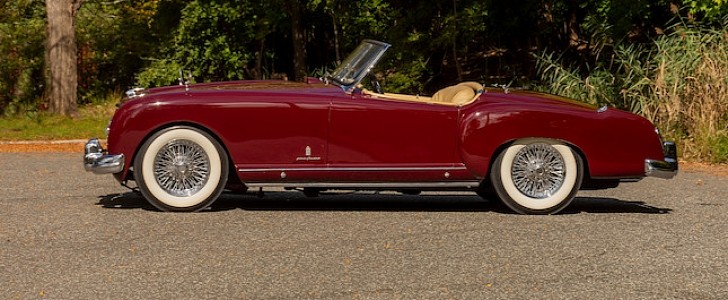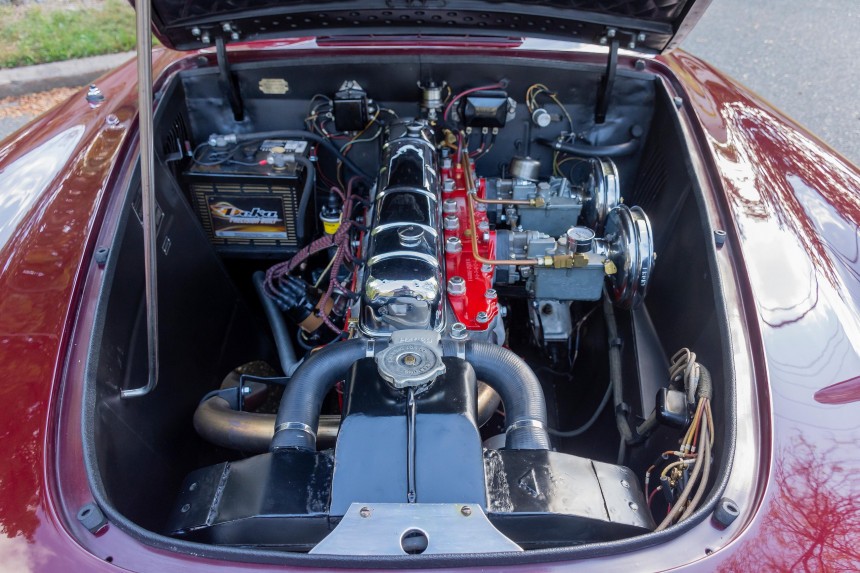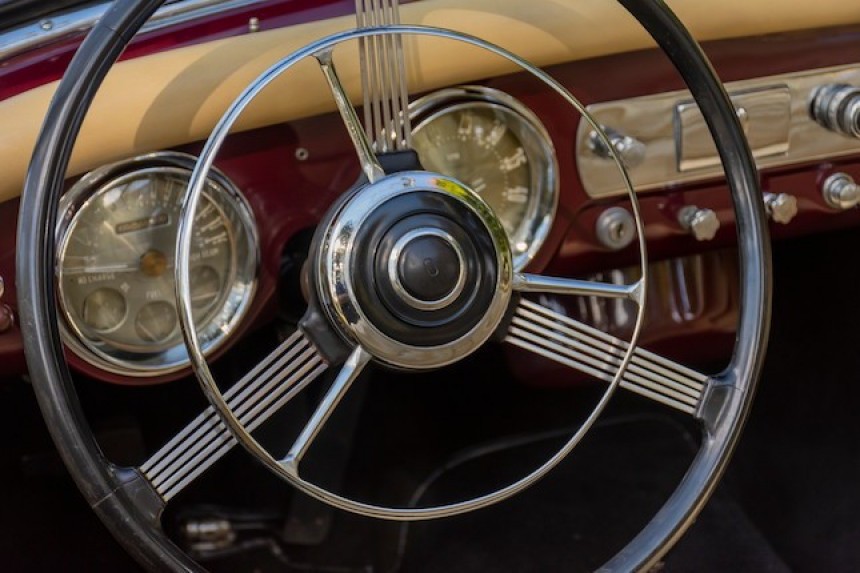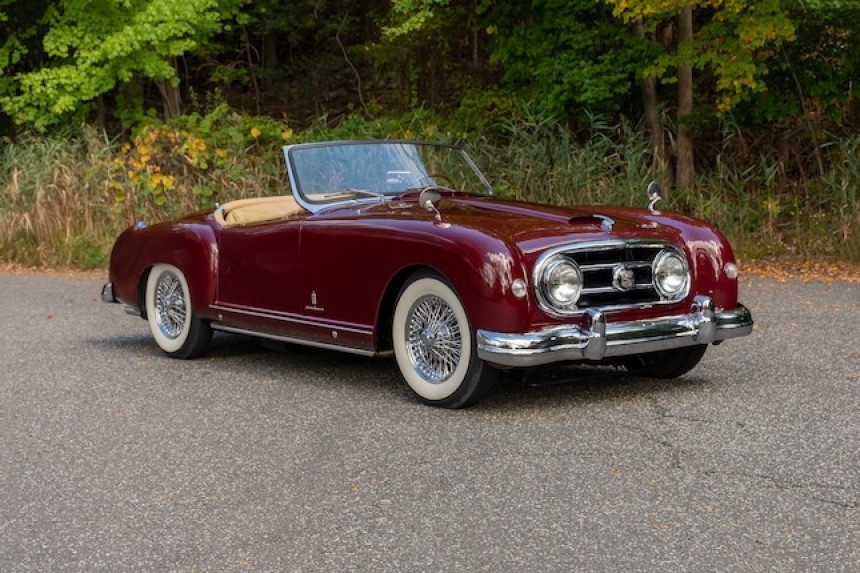During the early 1950s, Nash-Healey came out with a new coupe model named ‘Le Mans,’ and the name was much more than an honorarium as Nash-Healeys had competed in the Le Mans 24 Hours since 1950.
These were the first sports cars introduced in the U.S. by a major automaker after the fallow period of the Great Depression. The Healys came to fruition as a result of a chance meeting between Nash-Kelvinator and British automaker Donald Healey. A year after their introduction, the cars received styling accent cues from Pinin Farina and the subassembly work on the cars was completed in Italy.
As an aside, Donald Healey and the CEO of Nash-Kelvinator, George W. Mason, met on a transatlantic voyage on the ocean liner Queen Elizabeth as Healey was returning to England after failing to purchase suitable engines from General Motors' Cadillac division. During the early 1950s, Nash-Healey came out with a new coupe model named ‘Le Mans,’ and the name was much more than an honorarium as Nash-Healeys had competed in the Le Mans 24 Hours since 1950.
These were the first sports cars introduced in the U.S. by a major automaker after the fallow period of the Great Depression. The Healys came to fruition as a result of a chance meeting between Nash-Kelvinator and British automaker Donald Healey. A year after their introduction, the cars received styling accent cues from Pinin Farina and the subassembly work on the cars was completed in Italy.
As a result of a dinner meeting, Mason and Healey hashed out a production plan over the course of the passage, and the pair became fast friends over their shared interest in photography. It’s said that Mason owned a stereo (3-D) camera that Healey found intriguing.
A prototype of their efforts was rolled out at the Paris Motor Show in 1950, and the production model was unveiled during the Chicago Auto Show the following year.
That year Tony Rolt and Duncan Hamilton entered a prototype Nash-Healy in the French endurance race and it brought home a fourth-place finish out of the 29 cars that started the race.
Featuring lightweight aluminum bodies, a total of four of these racers were outfitted by Nash with Ambassador engines that had been upgraded with aluminum, high-compression heads, specialized manifolds and fueled by twin SU side-draft carburetors.
If there was any doubt of the efficacy of the cars, in 1951 Rolt and Hamilton again finished fourth in their class - and sixth overall - behind some big names in the racing game such as a Jaguar and even defeated a pair of Ferraris.
By 1952, Nash-Healy was back again and with Leslie Johnson and Tommy Wisdom behind the wheel, Nash-Healey finished third overall behind a set of works Mercedes 300SLs. They took first-in-class from a Luigi Chinetti Ferrari and whipped Briggs Cunningham's C4-R by a stunning ten laps. During that race, the pair earned the Rudge-Whitworth Cup given to the team that turned in the top performance over two consecutive years.
Johnson also contested the Mille Miglia that year in his Nash-Healy and completed that iconic race in seventh position overall during a race won by Ferrari.
For 1953, Johnson was behind the wheel - this time with Bert Hadley - and after starting from 27th position, Johnson and Hadley clawed back more than half the field to finish the race in 11th place. They did it by achieving a higher average speed than in 1952, but the latest technology had passed them by and racing was discontinued by Nash Motors after that season.
In fact, Nash-Healey Roadster production ended for good in 1953 with the last 90 cars built in 1954. All were Le Mans coupes. Just a few more than 500 Nash-Healey's were produced, and this car is one of just 62 completed for the 1953 model year.
This fantastic machine was ultimately sent for a comprehensive, frame-off, nut-and-bolt restoration. This process took four years to complete and the results were featured in Car Collector magazine.
The 1953 example here included a 252ci OHV Inline 6-Cylinder engine, twin Carter carburetors and generated 140bhp at 4,000rpm. The power was put to the track via a 3-speed manual transmission with overdrive.
The handling came via an independent front suspension with a solid rear axle and coil springs, and the stopping power was via 4-wheel drum brakes.
As an aside, Donald Healey and the CEO of Nash-Kelvinator, George W. Mason, met on a transatlantic voyage on the ocean liner Queen Elizabeth as Healey was returning to England after failing to purchase suitable engines from General Motors' Cadillac division. During the early 1950s, Nash-Healey came out with a new coupe model named ‘Le Mans,’ and the name was much more than an honorarium as Nash-Healeys had competed in the Le Mans 24 Hours since 1950.
These were the first sports cars introduced in the U.S. by a major automaker after the fallow period of the Great Depression. The Healys came to fruition as a result of a chance meeting between Nash-Kelvinator and British automaker Donald Healey. A year after their introduction, the cars received styling accent cues from Pinin Farina and the subassembly work on the cars was completed in Italy.
A prototype of their efforts was rolled out at the Paris Motor Show in 1950, and the production model was unveiled during the Chicago Auto Show the following year.
That year Tony Rolt and Duncan Hamilton entered a prototype Nash-Healy in the French endurance race and it brought home a fourth-place finish out of the 29 cars that started the race.
Featuring lightweight aluminum bodies, a total of four of these racers were outfitted by Nash with Ambassador engines that had been upgraded with aluminum, high-compression heads, specialized manifolds and fueled by twin SU side-draft carburetors.
By 1952, Nash-Healy was back again and with Leslie Johnson and Tommy Wisdom behind the wheel, Nash-Healey finished third overall behind a set of works Mercedes 300SLs. They took first-in-class from a Luigi Chinetti Ferrari and whipped Briggs Cunningham's C4-R by a stunning ten laps. During that race, the pair earned the Rudge-Whitworth Cup given to the team that turned in the top performance over two consecutive years.
Johnson also contested the Mille Miglia that year in his Nash-Healy and completed that iconic race in seventh position overall during a race won by Ferrari.
For 1953, Johnson was behind the wheel - this time with Bert Hadley - and after starting from 27th position, Johnson and Hadley clawed back more than half the field to finish the race in 11th place. They did it by achieving a higher average speed than in 1952, but the latest technology had passed them by and racing was discontinued by Nash Motors after that season.
This fantastic machine was ultimately sent for a comprehensive, frame-off, nut-and-bolt restoration. This process took four years to complete and the results were featured in Car Collector magazine.
The 1953 example here included a 252ci OHV Inline 6-Cylinder engine, twin Carter carburetors and generated 140bhp at 4,000rpm. The power was put to the track via a 3-speed manual transmission with overdrive.
The handling came via an independent front suspension with a solid rear axle and coil springs, and the stopping power was via 4-wheel drum brakes.












